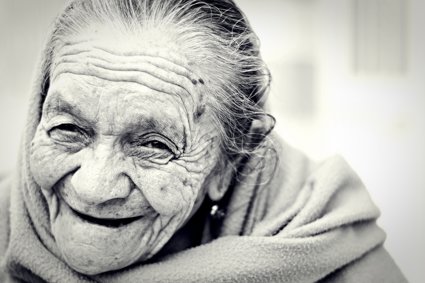
Long life geography
This section explores how life expectancy varies between different countries and how variations in life expectancy also occur according to income, occupation and gender
Key questions
How does life expectancy vary between different countries?
How does life expectancy vary between different regions of the UK?
How do variations in life expectancy occur according to income, occupation and gender?
How does life expectancy vary between different countries?
Life expectancy is a human development indicator and is a common measure of a country's level of development. It can be defined as ‘the average age to which a person can be expected to live' and is usually given for a country or region. Quite simply a short life expectancy is linked to the country being poorer and therefore having fewer health facilities, poorer diets, limited access to education (to teach about the need for a healthy diet, clean water etc), and generally a lower standard of living. Life expectancy can also fall as a result of factors such as famine, war and disease. Many countries with low life expectancy also have high infant mortality (the number of children per 1,000 who die before the age of five years), and this figure will bring down the average. Countries with high life expectancy are usually higher income countries with access to clean water and sanitation, established (and sometimes free) healthcare facilities and a generally higher standard of living.
HIV and AIDS have taken their toll in Africa, Asia and even South America, reducing life expectancy in 34 different countries (26 of them in Africa). According to UN statistics for the period 2005 - 2010, Africa is home to the world's lowest life expectancies with Swaziland (36.9 years), Mozambique (42.1 years) and Zambia (42.4 years) at the bottom of the list.
How does life expectancy vary between different regions of the UK?
Average life expectancy in the UK is 77.2 years for men and 81.6 years for women. However, there are regional variations within this, with the south of the country faring much better than the north. Regional life expectancy variations are often linked to health issues such as smoking and obesity. For example, much of the north west of England has a below average life expectancy (under 75 for men and under 80 for women). Residents of these areas are more likely to die from smoking-related illnesses, heart disease, stroke and cancer than anywhere else in the country. The north east also has high rates of smoking, drinking and obesity, although adults in Teesdale, Durham and Alnwick are among the most active in the country. Easington, in County Durham, has the highest proportion of adult smokers at 37%. Liverpool has the highest rate of hospital admissions for alcohol-related problems at 652 per 100,000. Boston, in Lincolnshire, has the highest proportion of obese adults at 31%.
In the South, the picture is different. Chiltern, in Buckinghamshire, has the lowest number of deaths from smoking at 147 deaths per 100,000 people. The borough of Kensington and Chelsea in London has the fewest deaths from cancer with 81 deaths per 100,000 people. Here, the life expectancy is 80 years for men and 85 years for women. It is also the local government district with the largest number of high earners (>£60,000) anywhere in the UK. Could there be a connection here?
How do variations in life expectancy occur according to income, occupation and gender?
According to the charity Help the Aged, there are two main reasons why women live longer than men:
-
Lifestyle differences: Women are generally more physically active than men and are less likely to smoke or drink excessively
-
Biological differences: There is growing evidence that women are biologically tougher than men and female hormones offer protection against some diseases
Some occupations have a greater risk to health than others, for example manual jobs or those where employees are exposed to harmful chemicals or pollutants. Variations in income can affect an individual's access to healthcare, education, housing and a healthy diet, all of which can impact on life expectancy.
Links
Starter
How old are the world's oldest people?
Have a look at the World's oldest person powerpoint to find out all about the world's oldest people.
Where do they live?
Why have they lived so long?
Main Activity
What does the geography of long-life look like?
Use the geography of long life powerpoint about the geography of long life to explore the geography of life expectancy in the UK.
Searching for the ‘fountain of youth', work in pairs to find out what the top five countries in the longest-lived list are. Also try to identify the countries with the lowest life-expectancy.
Have a look at the life expectancy variations powerpoint about life expectancy in the UK. How long do you expect to live for?
How does life expectancy vary between different groups of people? Using Census data, investigate how life expectancy varies within the UK according to:
-
Gender
-
Regional variations
-
Income
Working in groups, investigate the three variables and write a paragraph discussing each.
Extension Activity- Read the Case study about long life in Japan.
Plenary
Why do women live longer?
Discuss:
-
Biology (are there differences in how our bodies work?)
-
Work (do male occupations involve greater risk and danger?)
-
Lifestyle (are men exposed to greater risk, perhaps through sports or other leisure pursuits?)
File nameFiles
File type
Size
Download